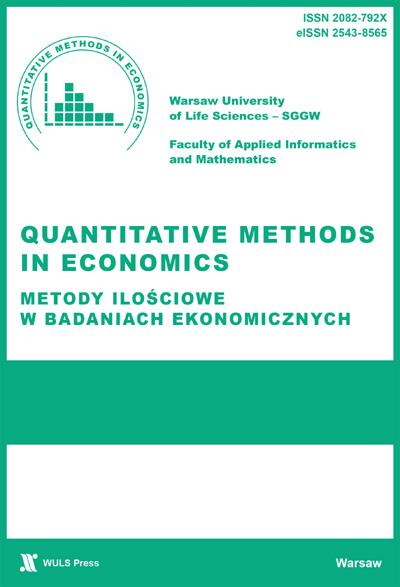DETERMINANTS OF THE DEMAND FOR INTERNATIONAL RESERVES IN UKRAINE.
Main Article Content
Abstrakt
This study investigates the demand for international reserves in Ukraine and its structural change in the wake of the 2008-2009 financial crisis in the context of a univariate error correction model (ECM). We find a time-invariant demand for international reserves in the short-run, with the inverse relationship with the volatility of international transactions, exchange rate depreciation and the excessive money stock and the positive link to imports and crisis developments. However, the long-term relationships are not stable over time, except for the effects of the money disequilibrium and crisis disturbances. The exchange rate depreciation and electoral cycle contribute to a depletion of reserves during the post-crisis period only. The adjustment of actual reserves to their long-run relationships is quite rapid.
Article Details
Jak cytować
Shevchuk, V. (2015). DETERMINANTS OF THE DEMAND FOR INTERNATIONAL RESERVES IN UKRAINE. Metody Ilościowe W Badaniach Ekonomicznych, 16(2), 102–112. Pobrano z https://qme.sggw.edu.pl/article/view/3772
Statystyki
Downloads
Download data is not yet available.
Rekomendowane teksty
Inne teksty tego samego autora
- Victor Shevchuk, Time-Varying Exchange Rate Pass-through in Eastern Europe , Metody Ilościowe w Badaniach Ekonomicznych: Tom 23 Nr 3 (2022)
- Victor Shevchuk, Roman Kopych, GERMAN FISCAL AUSTERITY EFFECTS ON INVESTMENTS AND EXPORTS IN THE CENTRAL AND EASTERN EUROPEAN COUNTRIES , Metody Ilościowe w Badaniach Ekonomicznych: Tom 18 Nr 1 (2017)
- Victor Shevchuk, SECTORAL MONEY SUPPLY EFFECTS IN UKRAINE , Metody Ilościowe w Badaniach Ekonomicznych: Tom 15 Nr 2 (2014)
- Victor Shevchuk, Cyclical Determinants of Regional House Prices in Poland , Metody Ilościowe w Badaniach Ekonomicznych: Tom 26 Nr 3 (2025)
Licencja
Publikowane artykuły dostępne są na warunkach Open Access na zasadach licencji Creative Commons CC BY-NC – do celów niekomercyjnych udostępnione materiały mogą być kopiowane, drukowane i rozpowszechniane. Autorzy ponoszą opłatę za opublikowanie artykułu.

